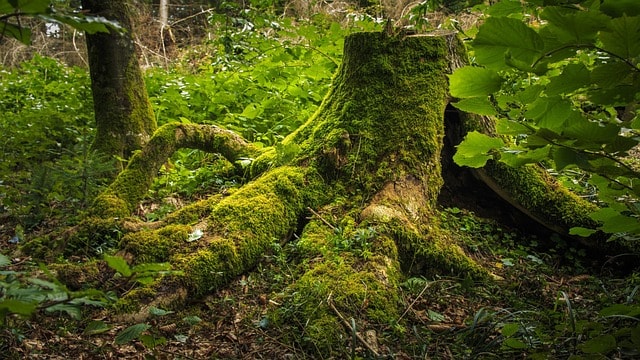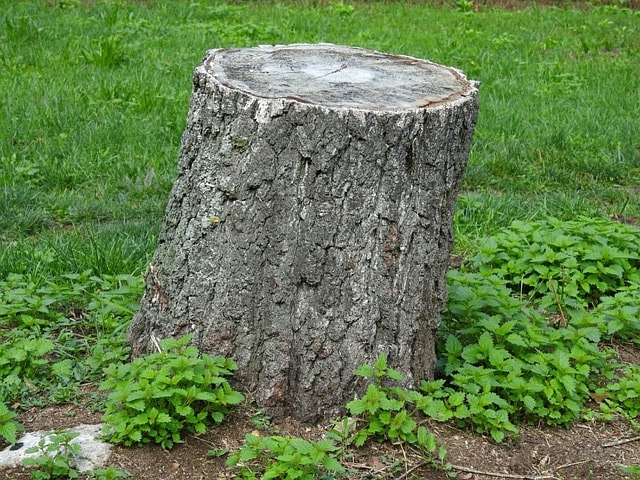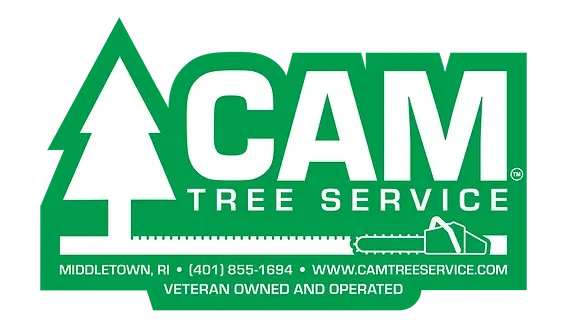Tree Stump Removal Cost Breakdown – CAM Tree Services Middletown, RI
You might wonder how much to budget for tree stump removal in Rhode Island. In this post, I’ll guide you through the typical costs and explain the factors affecting the price. Understanding these details will help you avoid unexpected expenses and find smart ways to save money while ensuring your property stays safe and attractive. Whether you’re dealing with a single stump or multiple tree remnants, knowing what to expect gives you an advantage in planning and negotiating with service providers. Hiring professional stump removal services can also ensure the job is done efficiently and effectively. CALL NOW

Understanding Tree Stump Removal CAM Tree Services
The tree stump removal process involves eliminating a tree’s remaining base after it has been cut down. This task is important for aesthetic and safety reasons and requires specialized equipment and knowledge. Whether you choose grinding, chemical treatments, or manual removal, understanding the methods and costs involved helps you make informed decisions for your property in Rhode Island.
Importance of Stump Removal
Remove tree stumps to prevent accidents like tripping and deter pests such as termites and ants from invading your yard. This will also allow you to reclaim space for gardening or new plantings. Without removing stumps, your property may face ongoing problems that affect its value and usability.
Factors Influencing Cost
Along with the size of the stump and its location on your property, other factors such as the removal method, equipment needed, and accessibility can significantly impact the tree stump removal cost. Professional labor fees and disposal expenses also add to your total. You should budget accordingly. Any unexpected complications during removal might increase the final cost. A complex root system can further increase costs due to the additional time and effort required for removal.
Consequently, understanding each factor helps you manage expectations and explore cost-saving options. Important considerations include:
- Stump diameter and depth – Larger stumps require more effort and time to remove.
- Type of equipment – Stump grinders versus chemical removers affect pricing.
- Accessibility – Difficult-to-reach stumps may increase labor costs.
- Disposal fees – Removing and hauling away debris adds to the overall expense.
Additional challenges, like roots growing near underground utilities, can complicate the process and be costly. Rocky soil can also impact removal costs due to increased wear on equipment and the need for additional labor and materials.

Stump Removal Methods
There are several methods for removing tree stumps, each with advantages and cost implications. The most common methods include stump grinding, chemical rotting, and manual removal. Understanding these methods can help you select the best option, whether dealing with a single stump or multiple.
Stump Grinding
Stump grinding is one of the most popular and efficient methods for removing tree stumps. This process involves using a specialized stump grinder to grind the stump into small wood chips. The average cost for stump grinding ranges from $2 to $5 per diameter inch, making it a cost-effective solution for many homeowners.
Stump grinding is suitable for various tree species, including hardwoods like oak and maple, and softwoods like pine. The cost can vary depending on the stump’s size, with larger stumps requiring more time and equipment to remove. This method is particularly advantageous because it leaves the ground level and is ready for new plantings or landscaping.
Chemical Rotting
Chemical rotting is another method for removing tree stumps. It involves using chemicals like potassium nitrate to accelerate the decomposition process. This method is less labor-intensive than stump grinding but requires patience, as it can take several weeks or even months for the stump to fully decompose.
The cost of chemical rotting typically ranges from $100 to $300, depending on the size of the stump and the type of chemicals used. This method is ideal for small to medium-sized stumps but may not be suitable for larger stumps or those with complex root systems. Chemical rotting is a good option if you’re looking for a less immediate but still effective solution.
Average Costs in Rhode Island
The average stump removal cost in Rhode Island varies depending on the size of the stump, location, and removal method. On average, prices range from $150 to $600 per stump. Larger or harder-to-reach stumps can increase costs due to the extra labor and equipment needed. I advise gathering several quotes for the best price while ensuring safe and effective removal.
Regional Pricing Trends
Trends in Rhode Island show that urban areas like Providence tend to have slightly higher prices for tree stump removal compared to rural parts of the state. This is due to increased demand and labor costs. Additionally, winter months may see some price fluctuations as contractors adjust to seasonal availability. Knowing these trends can help you schedule removal at a potentially lower cost.
Compared to the national average cost of approximately $340, which can range from $75 to $500, Rhode Island’s prices may vary based on these regional factors.
Comparison with Neighboring States
| Tree Stump Removal Cost Comparison | |
|---|---|
| State | Average Cost per Stump |
| Rhode Island | $150 – $600 |
| Massachusetts | $160 – $650 |
| Connecticut | $140 – $580 |
| New York | $170 – $700 |
Regional price differences reflect local economic factors, labor rates, and equipment costs. While Rhode Island’s tree stump removal prices are generally moderate compared to those of its neighbors, individual quotes can vary based on service quality and contractor experience.
Rhode Island’s competitive pricing atmosphere benefits you, but I must stress that the lowest price might not always mean the best service. Comparing offers from multiple providers, checking their safety records, and confirming the scope of work can save you from costly mishaps. Investing a little more in a reputable professional often ensures efficient removal and prevents damage to your property.
DIY vs. Professional Services
Some homeowners in Rhode Island opt for manual stump removal to save money, while others prefer professional services for convenience and safety. Understanding the differences helps you make an informed decision based on your budget, skill level, and the size of the stump. DIY can be rewarding, but it requires the right tools and patience. Meanwhile, professional removal offers efficiency and expertise, especially for large or difficult stumps. Balancing cost with potential risks is key to choosing the best method for your situation.
Pros and Cons of DIY Removal
Below is a clear comparison highlighting the main advantages and disadvantages of diy stump removal.
| Pros | Cons |
|---|---|
| Lower upfront cost | Requires physical labor |
| Flexible timing | Lack of specialized equipment |
| Sense of accomplishment | Longer process duration |
| No need to schedule appointments | Potential safety hazards |
| Learn new skills | Messy disposal challenges |
| Full control over the job | Possible damage to surrounding landscape |
When to Hire a Professional
When removing tree stumps, you should consider a professional when the stump is large, near structures, or in a difficult location. Safety risks increase, and specialized machinery is often needed. I advise hiring experts if your DIY attempts could cause injury or property damage.
A professional in Rhode Island brings experience and proper equipment to handle stubborn or hazardous stumps efficiently, reducing your risk and hassle. They also handle debris disposal, saving you time. For large projects or if you want guaranteed results without worrying about safety, investing in professional service is a smart choice.
Additional Costs to Consider
Now that you understand the basic expenses of tree stump removal, it’s important to consider additional costs that can impact your final bill. The stump removal method and factors beyond the actual stump grinding, such as local regulations, permits, and the disposal process, can significantly influence the overall costs. Being aware of these potential fees helps you budget more accurately and avoid surprises when the cleanup begins.
Permits and Regulations
Along with the direct removal costs, you may need to secure permits from your local Rhode Island municipality before starting work. Some areas enforce strict tree removal and stump disposal regulations to protect the environment and maintain public safety. I recommend checking your city’s guidelines because failing to obtain the necessary permits can lead to fines or project delays, increasing your overall expense.
Additionally, it is crucial to consult the local fire department when considering stump removal methods involving burning. Informing the fire department about a controlled burn is a key safety precaution, particularly for DIY stump removal tasks.
Cleanup and Disposal Fees
You’ll want to factor in debris removal, cleanup, and disposal fees to ensure your property looks its best after stump removal. Removing the stump often generates wood chips, roots, and debris that must be hauled away properly. If you don’t have the means to handle disposal, these services typically come at an additional cost but will save you time and effort.
Costs for cleanup and disposal can vary significantly depending on the stump’s size and local waste management fees. Some companies include this in their quote, while others charge separately, so you need to clarify this upfront. Disposal requirements become more costly and complex if the debris contains diseased wood or invasive species. I advise asking your service provider about how they handle cleanup to avoid unexpected extra charges.
Root Systems and Stump Removal
The root system of a tree plays a crucial role in the stump removal process. The type and size of the tree, as well as the soil condition, can significantly impact the complexity and cost of removing the stump. Understanding the root system can help you better estimate the cost and choose the most appropriate removal method.
Impact of Root Systems on Removal Complexity
The complexity of a tree’s root system can greatly influence the difficulty and cost of stump removal. Trees with large or intricate root systems, such as oak or maple, often require more time, effort, and specialized equipment to remove, which can increase the overall cost. On the other hand, trees with smaller or less complex root systems, like pine or spruce, are generally easier and less expensive to remove.
The cost of root removal can range from $2 to $5 per inch of root diameter, depending on the complexity of the root system and the chosen removal method. When planning for stump removal, it’s essential to consider the root system’s impact on the process and select a method that suits the specific tree and soil conditions. This consideration will help you manage costs and ensure a successful removal project.
Tips for Saving on Stump Removal
Unlike other yard services, stump removal cost can often be managed with a few smart strategies.
- Consider DIY grinding for small stumps
- Compare quotes from multiple contractors
- Timing your removal during off-peak seasons
- Bundle stump removal with tree cutting or landscaping tasks
The cost for the first stump is generally higher, typically between $75 and $100. Still, additional stumps are often charged at a reduced rate, making removing multiple stumps more economical.
You should also inspect your yard for multiple stumps to tackle at once, yielding better pricing.
Timing and Seasonal Considerations
Tips for reducing stump removal expenses include scheduling during the off-season when demand is lower, typically in late fall or early spring in Rhode Island. Winter months may offer discounts, but check for ground frost complications. Booking early in the year often helps you lock in prices before peak summer workloads increase costs.
Additionally, if you have more than one stump to remove, it can lower the overall cost. Subsequent stumps are often charged at a reduced rate after the first, making the project more economical due to the efficiencies gained by working on-site with the necessary equipment.
Bundling Services
Compared to piecemeal service booking, bundling stump removal with other tree care or landscaping tends to lower overall expenses. Providers often discount packages since it improves efficiency and reduces mobilization costs.
When you bundle stump removal with tree trimming, pruning, or even landscaping, you create an opportunity for contractors to save on labor and equipment setup. Additionally, removing an additional stump is generally cheaper than the first one, allowing homeowners to benefit from significantly lower rates and discounts when having multiple stumps removed simultaneously. This decreases your total bill and can speed up project timelines. However, ensure you get a clear, itemized estimate to understand savings versus individual service costs. Sometimes, overbundling may mask hidden fees or unnecessary extra work.
Common Myths About Stump Removal
Despite the abundance of information available, many people hold onto myths about tree stump removal that can lead to misguided expectations. I have seen clients confused by misinformation, which affects how they approach the removal process. In reality, understanding what is true helps you make better decisions, avoid unnecessary costs, and maintain the health of your landscape in Rhode Island.
One common misconception is that removing stubborn stumps is a simple DIY task. However, due to safety risks and the need for specialized equipment, these stumps often require professional help.
Misconceptions About Costs
Stump removal costs are often exaggerated due to common myths suggesting they’re either prohibitively expensive or that DIY methods always save money. The average price varies widely based on factors like stump size and removal method. Knowing these variables can help you accurately estimate expenses and avoid overpaying.
Myths About Tree Stumps and Health
Many people believe tree stumps pose severe health risks or disease threats to other plants and humans. While some concerns are valid, others are significantly overstated and can cause unnecessary worry.
Rotting wood in tree stumps can harbor fungi and pests, posing health risks to your garden and home. The most dangerous misconception is that all stumps will spread disease or attract harmful pests. The risk depends on the stump’s condition and your local environment. While decaying stumps can harbor fungi or insects, proper removal and treatment typically prevent these issues. Knowing which risks are real empowers you to act wisely and protect your property and your family’s well-being.
To wrap up
Reflecting on tree stump removal cost breakdowns in Rhode Island, I understand that factors like stump size, location, and method affect overall expenses. When embarking on a tree stump removal project, I encourage you to obtain multiple quotes and explore DIY options to save money. By planning and knowing what to expect, you can manage your budget effectively and ensure a smooth removal process for your property. Your awareness and preparation will make a noticeable difference in cost and results.
Q: What factors influence the tree stump removal cost in Rhode Island?
The cost of tree stump removal in Rhode Island depends on several factors, including the size and diameter, the tree type, the stump location, and accessibility. Larger stumps require more labor and equipment, increasing the price. Additionally, stumps in hard-to-reach areas or close to structures may incur higher costs due to the extra care needed. The method used for removal, such as grinding or chemical treatment, also impacts the overall expense.
Q: How much does professional stump grinding typically cost in Rhode Island?
A: The average stump removal cost for professional stump grinding in Rhode Island usually ranges between $100 and $400 per stump, depending on size and difficulty. Small stumps often fall towards the lower end, while large or complicated stump removals are on the higher end. Some companies may charge a minimum service fee or travel charges if the location is remote. It’s advisable to obtain multiple quotes to compare pricing and services offered.
Q: What are effective ways to reduce tree stump removal expenses in Rhode Island?
To save on stump removal costs in Rhode Island, consider these approaches: hiring a professional tree removal service for the initial tree cutting, as they often offer bundled discounts for stump removal, removing smaller stumps yourself with proper tools, bundling multiple stump removals with one company for discounted rates, and comparing quotes from various local services to find competitive pricing. Opting for stump grinding over complete extraction is usually less expensive and less disruptive to your yard. Scheduling removal during the off-season may also result in lower fees.
Why choose CAM Tree Services in Middletown, RI?
CAM Tree Services in Middletown, RI delivers expert stump grinding with precision, fast response times, and affordable rates. Trust our local, experienced team to clear stumps safely and efficiently. We are one of the best professional tree removal companies on the island and off-island! Call your stump removal professional today!
